Latest news
To find out more about what the A417 Missing Link team have been doing out and about in the local community, click on one of the stories below and discover the details about the positive impact that the project is having.
Stories

Introducing Teddy!
Teddy’s dad Stuart emailed us to ask a very important question and one relevant for this time of the year.
Stuart was worried about the adder relocation and wanted to know if it was safe for Teddy to walk in the vicinity of the project.
We did look to relocate in close vicinity of the A417 however, we very soon became aware that local reptile sites were full to capacity already and we needed to look further afield. The majority of adders were relocated outside of the Cotswolds.
10 adders were tagged on the bottom of their tails to collect really useful and interesting information for the A417 Missing Link and other projects to use going forward.
We acknowledged that the remaining small proportion of adders were placed on National Highways land where there is no public access, however, it’s important to remember that the Cotswold’s scarp has always had a robust population of adders and so caution must always be taken across any Cotswold sites.
Enjoy your walks and thank you for your enquiry. If anyone would like to join Stuart and Teddy, please contact Barber Wood dog walking community.
Interested in Archaeology?
Come and talk to the team working on the A417 Missing Link project
Bring your children along for a deep dive into the world of Archaeology, to see how the past influences and connects us today!
Open to members of the public, free of charge
When: 10am 3pm, Saturday 11 May 2024
Where: Gloucester Guildhall, 23 Eastgate St, Gloucester, GL1 1NS
Supported by Oxford Cotswold Archaeology
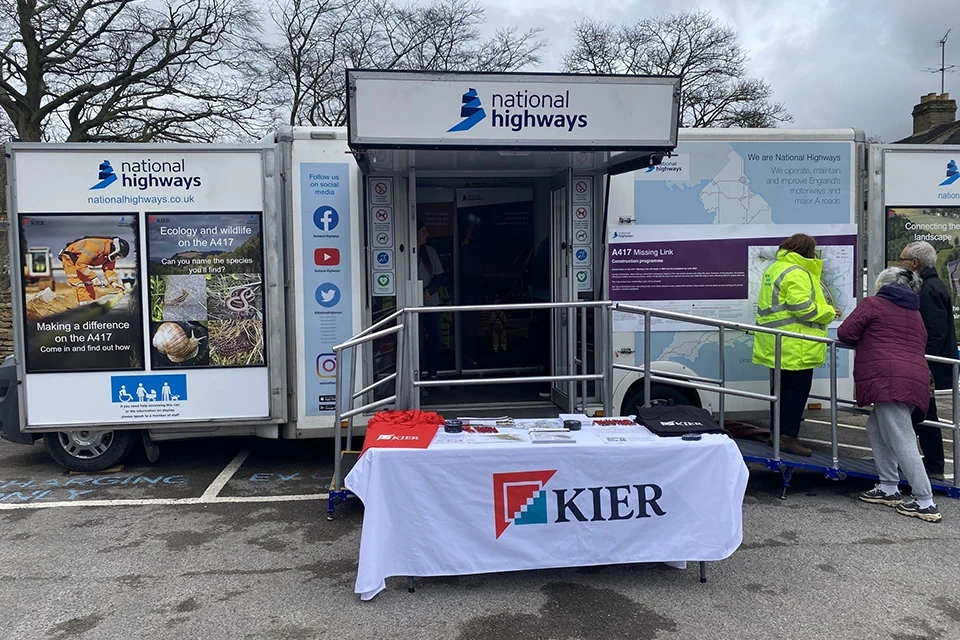
PIE events complete
Our recent public information events in March and April have been a great success. It was lovely to meet everyone who came along. Almost 250 people came to the events to speak to the team and ask any questions that they had.
The next round of public information events will take place in October and we’ll inform you in due course once dates have been confirmed.

Project update
The project has reached a new milestone this month as we began the offline build.
This build is in preparation for us to put in the foundations for new bridges which we’ll be putting into place later on. The recent overnight closures meant that we were able to safely carry out earthworks at several locations, lay new surfacing and paint road markings. Our new site compound is also progressing well.

Easter egg delivery!
To celebrate Easter, we recently visited The Gloucester Hospital children’s ward, the James Hopkins Trust, the Women and Children Refuge in Gloucester, and the Sandfields Care Home to deliver chocolate Easter eggs donated by members of our team. In total, we donated over 300 eggs!
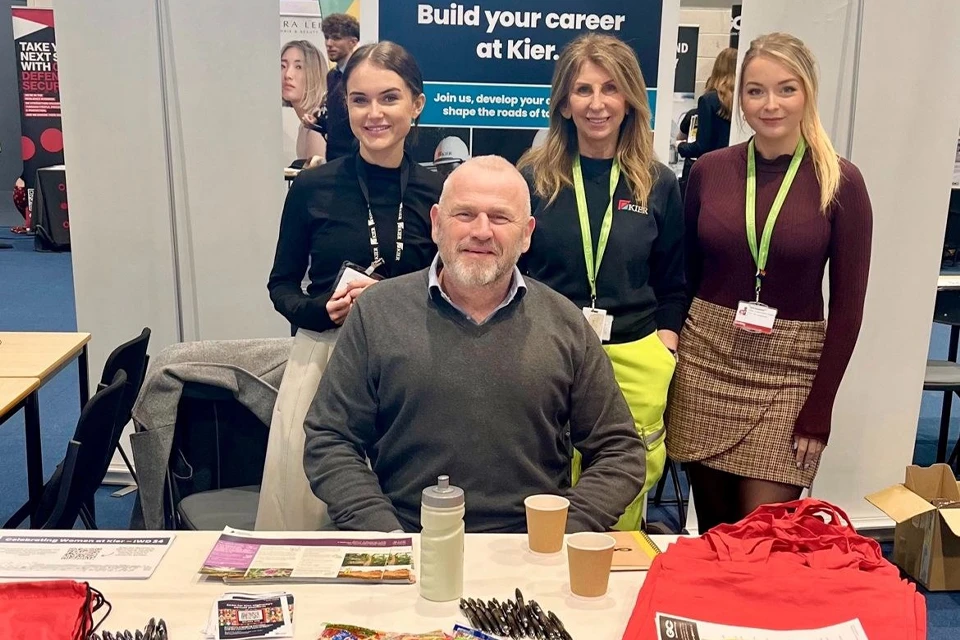
Gloucestershire College Apprenticeship Open Day
We recently visited Gloucestershire College for their Apprenticeship Open Day. Members of our construction and earthworks teams talked to young people about their careers and the apprenticeships available.

Open Doors Week
This month we celebrated Open Doors Week 2024 by giving members of the public the chance to peek behind the scenes of the scheme. Forty people came along to the two sessions to see all the progress we’ve being making on site.

Connecting Parishes
Improving connectivity doesn’t just apply to the road! Connecting Parishes is a project that National Highways is working on, together with Gloucestershire County Council and the Gloucestershire Local Access Forum, to improve connectivity and accessibility of the Public Rights of Way (PRoW) near the A417.
How is the project being funded?
This project has received Designated Funding from National Highways’ ‘Users and Communities’ fund, which aligns with the ‘Walkers, Cyclists and Horse Riders and Communities’ themes. The purpose of these funding streams is to build new infrastructure and enhance existing facilities to encourage sustainable, non-motorised forms of transport.
What is Connecting Parishes?
The Connecting Parishes project seeks to reconnect PRoW between neighbouring parishes and the Cotswolds Way, which were previously severed by the Strategic Road Network.
There will be a core focus on improving active travel, ensuring there are more accessible and safer active travel options which will enhance local connectivity for communities and allow more people to enjoy the Cotswolds National Landscape (formerly known as the Cotswolds Area of Outstanding Natural Beauty).
Working with Gloucestershire County Council, who are leading on delivering these projects, Connecting Parishes consists of 18 different sections of Public Rights of Way which will link into the Air Balloon Way, the Cotswold Way or other promoted routes.
You may have noticed some work has already started. If these works have impacted you, we’d like to thank you for your patience and understanding while we deliver this important project, which will offer many benefits to local people and visitors. We’ll share more updates with you and photos as the project progresses.
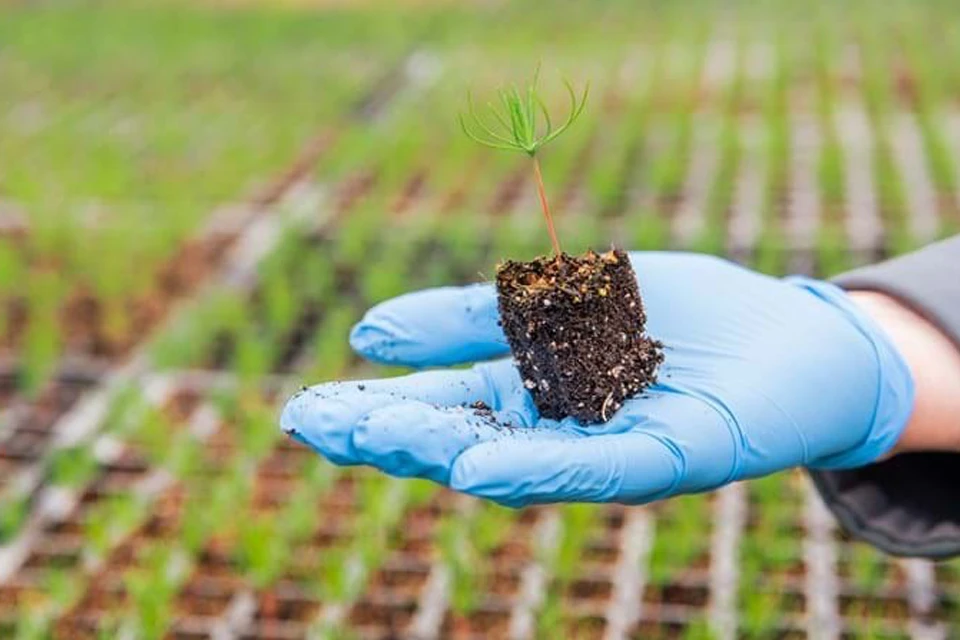
The great 3 million tree giveaway
During the most recent National Tree Week, National Highways launched a tree- mendous giveaway, committing to donate 600,000 trees a year for the next five years. By the end, we’ll have planted 3 million trees of all different species.
If you’d like to apply for trees to plant, please fill out this tree planting questionnaire now Tree Planting Questionnaire (office.com)

Supporting the community
Making a real difference to local families
At the beginning of December, members of the project team from our delivery partner Kier volunteered at the James Hopkins Trust (James Hopkins Trust – Caring for severely disabled children), helping prepare their memorial gardens for an event.
The Trust provides care for babies and children up to the age of five who have a life limiting or life-threatening condition while supporting their families. Since 1989 James Hopkins Trust has helped over 600 children and their families in every corner of Gloucestershire, offering respite care in the family home or at their multi-sensory respite centre and gardens called Kites Corner.
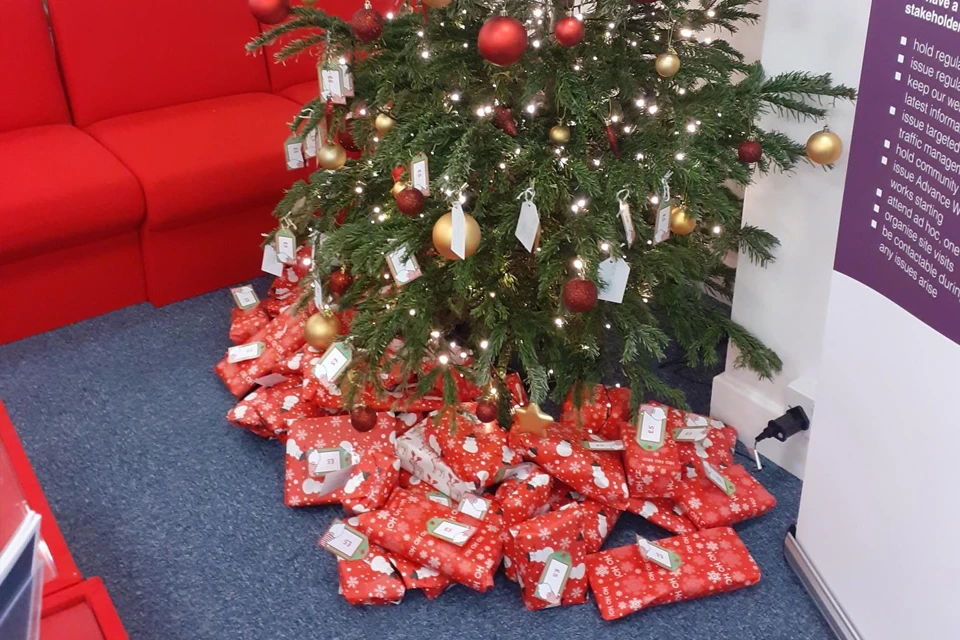
Helping the homeless this Christmas
This Christmas, we’re working in conjunction with Gloucestershire Community Kitchen and donating to the Gloucester homeless. Visitors to the kitchen will receive a hot meal and leave with a present. This year our office has a “giving tree” which has tickets that contain a list of items that the team will buy, wrap and place under the tree, ready to be donated. Gifts will include gloves, toiletries and other items that will ensure a homeless person has something to unwrap at this time of year.

A417 project team lend a hand to maintain vital Cotswold habitats
In early October, 22 members of the A417 project team visited Cleeve Common and Leckhampton Common in the Cotswold Area of Outstanding Natural Beauty, to help maintain these important habitats.
Both locations are designated Sites of Special Scientific Interest (SSSIs) for their geology, habitats and plants, including limestone grassland, which is found in abundance in the Cotswolds and provides special habitats for lots of local wildlife.
Some of the team visited the area that Leckhampton volunteers call the ‘green gym’, for its near-vertical incline and the tough walk uphill to get there. Here they worked hard to clear scrub and gorse so that valuable grasslands can regenerate and flourish.
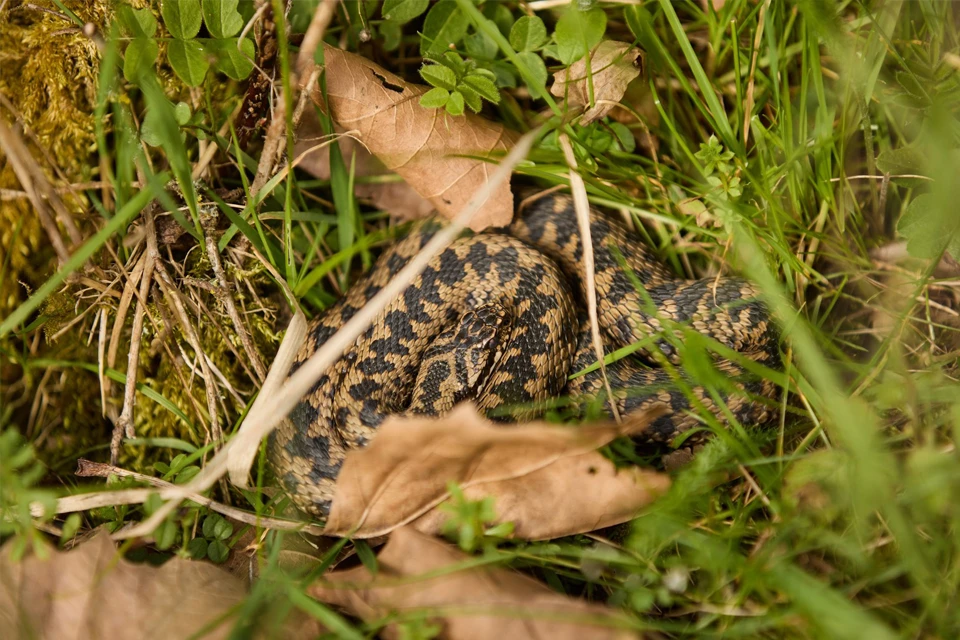
Environmental protection update
This month, we’ve finished relocating reptiles to nearby habitats away from construction areas. We’ve moved nearly 100 snakes and more than 800 slow worms, which look a bit like snakes at first glance but are actually limbless lizards!
Over 1200 lizards have also made the journey to new homes and our team of dedicated ecologists will continue to monitor all of the reptiles’ wellbeing. Special fencing has been put up to ensure that they don’t go back into unsafe areas.

Environmental protection update
Our work to protect local wildlife continues. We’ve had 15 ecologists on site every weekday since March, but the reptile relocation is now coming to an end. We’ve safely moved around 2,000 reptiles to date! We will be monitoring the reptiles progress and ensuring their habitats are maintained.
With special permission, we continue to relocate Roman Snails and we’ve moved approximately 100 to safe, new habitats away from work areas! We plan to do more relocations in the spring next year.
All fencing will remain in place throughout construction to prevent reptiles and Roman Snails from entering site.
We’ve also been working hard to support local birds and installed 40 boxes throughout the area for birds such as Kestrels and woodland birds.

National Highways helps protect UK bat species along the A417 Missing Link
We’ve started to put in measures to protect the various species of bats that have made their home in the area.
We recently completed some strengthening work on an old World War II bunker, which is used as a roost by Lesser Horseshoes. Our improvements will not only go towards mitigating disturbance impacts during construction of the new A417, but will also safeguard the building, preventing it from falling into further disrepair in the future. We also used this opportunity to provide some additional roosting features to enhance the structure for other bat species that are found in the area.
We’re also installing bat boxes in suitable habitat across the scheme, which although not obvious to passing motorists, will provide alternative homes for the bats.
In addition to this, we’re also planting trees, hedges, woodland and grasslands to improve their foraging habitats.
Natasha James, Ecological Clerk of Works, said: “It is vitally important to preserve, protect and enhance the habitat of the wildlife within our site and our surroundings.
“Bats will feed within the area around their roosts, which can be up to 10km or more depending on the species. It is therefore important that we provide habitat protection throughout our site as the bats fly between their roosts and feeding grounds.
“It is also essential to ensure that these habitats are protected for bats and enhance opportunities for bats where we can.”
You can read the full press release on the National Highways website by clicking on the button below.

Environmental protection update
Our work to protect local wildlife continues. We’ve had 15 ecologists on site every weekday since March, but the reptile relocation is now coming to an end. We’ve safely moved around 2,000 reptiles to date! We will be monitoring the reptiles progress and ensuring their habitats are maintained.
With special permission, we continue to relocate Roman Snails and we’ve moved approximately 100 to safe, new habitats away from work areas! We plan to do more relocations in the spring next year.
All fencing will remain in place throughout construction to prevent reptiles and Roman Snails from entering site.
We’ve also been working hard to support local birds and installed 40 boxes throughout the area for birds such as Kestrels and woodland birds.
Stories in the news:
Kier to provide new facilities for historic Gloucestershire school
Kier has started work on delivering new, purpose-built teaching facilities accommodation to Katharine Lady Berkeley's School in Wotton-under-Edge.
Searching for snakes to clear path for dual-carriageway
Engineers and ecologists are joining forces to search for snakes, to clear the way for a long awaited new road.
Defibrillators installed along A417 in Gloucestershire
The equipment and training for local communities to learn how to use them has been provided through more than £9,300 in funding from National Highways' social value fund.




